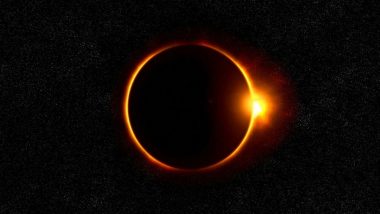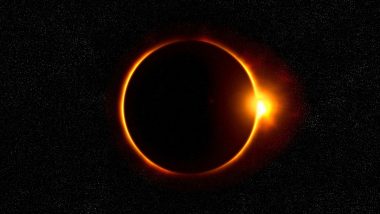Around the year, people on Earth witness several celestial spectacles such as meteor showers, solar eclipses, lunar eclipses and other visible planets in the sky. In most calendar years, there are 2-3 lunar eclipses and 2-4 solar eclipses. On average, we see a total of four eclipses a year. Today marks the first solar eclipse of 2023. If you are an eclipse enthusiast and love observing the phenomenon, we give you all the dates of eclipses in 2023.
Solar Eclipses in 2023 Dates
This year, we will see two solar eclipses – a total solar eclipse and an annular solar eclipse. Here are the dates:
April 20: Total Solar Eclipse – This year’s solar eclipse is a rare hybrid combination of two eclipses where the sun passes through two phases of an annular and total eclipse and back again. This eclipse is visible only from the southern Indian Ocean, parts of Antarctica, most of Australasia, Indonesia, the Philippines and Oceania.
October 14: Annular Solar Eclipse - An annular solar eclipse occurs when the Moon passes between the Sun and Earth but when it is at or near its farthest point from Earth. In this case, the moon appears smaller than the sun because of its distance from the Earth. It does not cast a complete shadow but appears as a dark patch on the brighter sun in its background, creating a ring of sun around the moon. The next annular eclipse will be on October 14, 2023. It will be visible from West Africa, South and North America, Pacific, Atlantic and Artic regions.
Lunar Eclipses in 2023 Dates
May 5: Penumbral Lunar Eclipse – A penumbral lunar eclipse is the next eclipse we will witness this year. It will likely take place on May 5 this year. A penumbral lunar eclipse is difficult to spot since the Earth, Sun and Moon are imperfectly aligned. The earth blocks some of the Sun's light from directly reaching the Moon's surface and covers part of the Moon with the outer part of its shadow – the penumbra. Interesting Myths and Legends About Chandra Grahan.
October 28-29: Partial Lunar Eclipse – The last eclipse of 2023 will be a partial lunar eclipse. During a partial lunar eclipse, only part of the moon enters Earth's shadow. This lunar eclipse will be visible from maximum parts of the globe, including Europe, Asia, much of South America, North America, the Pacific and Atlantic Oceans, as well as Antarctica.
This is the eclipse calendar of 2023. Save it, if you don’t want to miss out on any of these celestial events.
(The above story first appeared on LatestLY on May 04, 2023 10:13 PM IST. For more news and updates on politics, world, sports, entertainment and lifestyle, log on to our website latestly.com).













 Quickly
Quickly





















